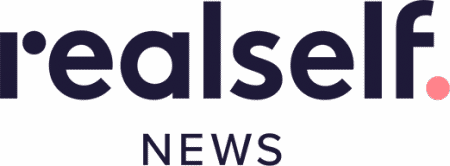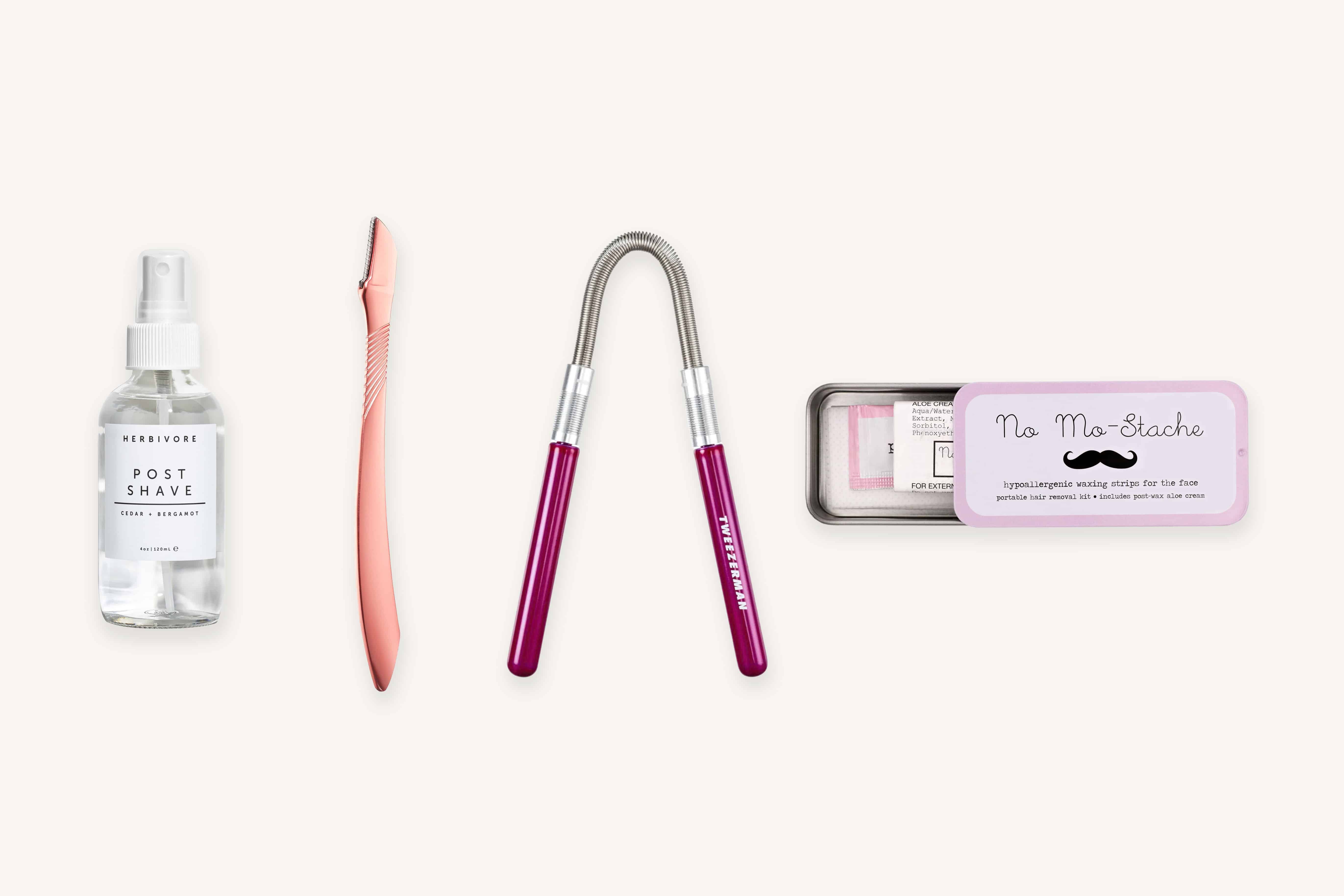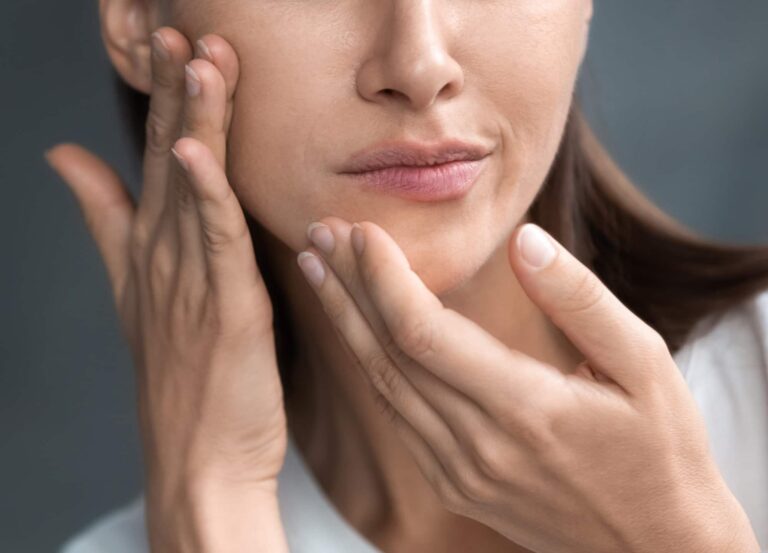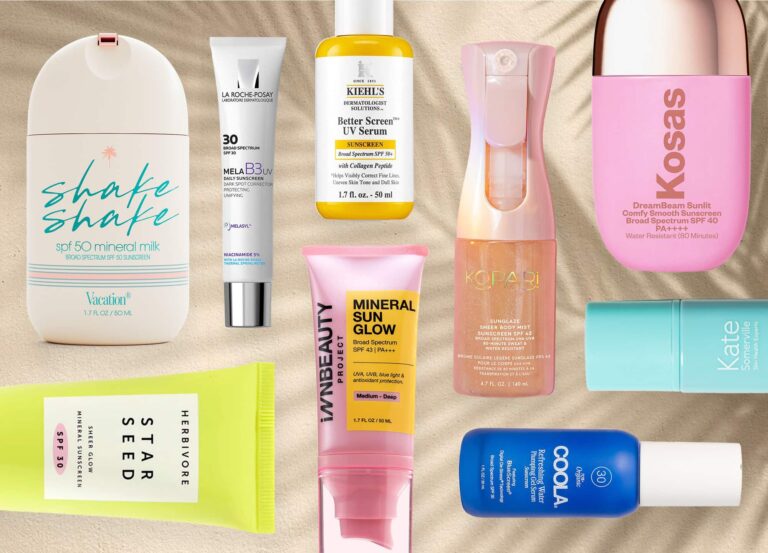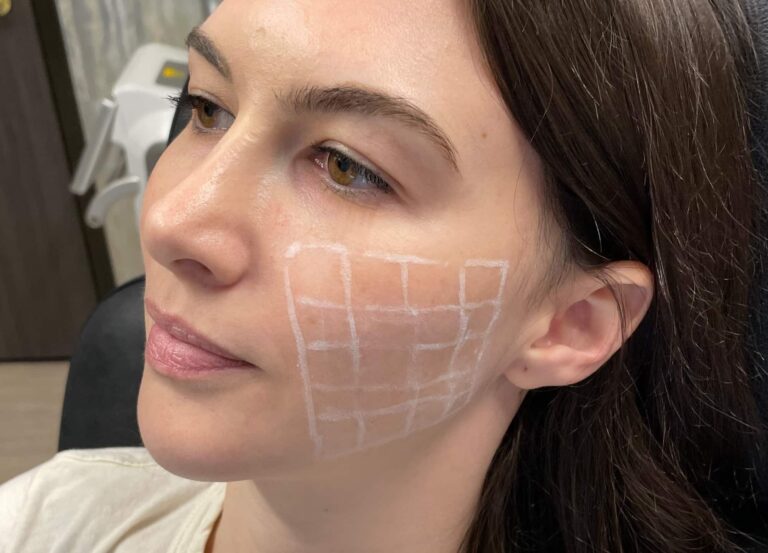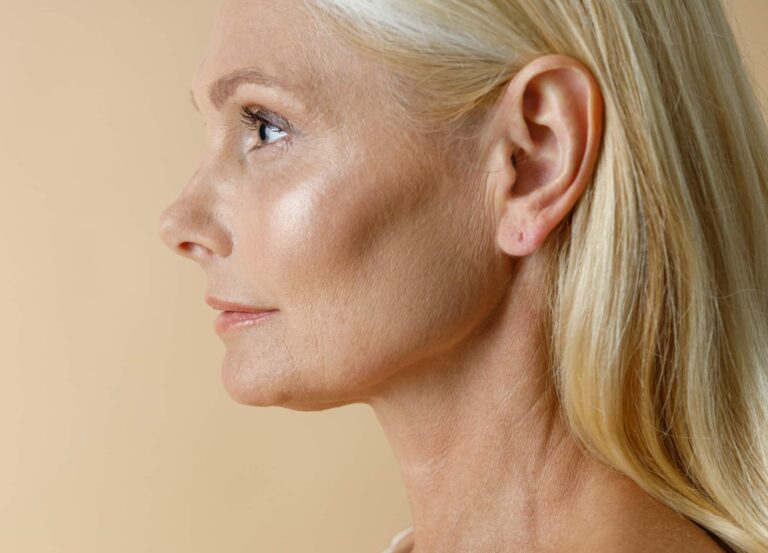It’s the golden beauty rule of the current times, according to professional colorists, hairstylists, and aestheticians: don’t attempt to reinvent your hair in quarantine. That means no going from black to platinum using box dye, no cutting bangs after a bottle of wine, and no DIY brow waxes or lamination. But if you’re the type who keeps standing appointments to deal with your upper lip hair and relies on dermaplaning to keep your foundation looking airbrushed, you don’t have to embrace unwanted hair while salons and spas are closed, either.
We asked three professionals to break down the do’s and don’ts of facial hair removal at home. Below, their best tools, techniques, and tips.
Brows
Now is not the time to go for an entirely new brow style; instead, focus on maintaining the shape from your last professional appointment. Tweezing is your best bet when DIYing your own brows, says Emily Schwanke, an aesthetician at The Vanity Vault in Calgary, Alberta. She cautions against at-home waxing or threading, “as any mistake can ruin months or years of growing in brow hairs and building your desired shape.” When tweezing, it’s an old wives’ tale that you have to avoid the tops of the brows, she says, as long as you’re careful not to disturb the overall shape: “Tweezing the top, bottom, and between the brows is fine, but do it sparingly.”
New York City esthetician Cynthia Rivas offers another tip: “I find it helpful to degrease skin prior to tweezing, so apply a little powder on the area you are tweezing. Powder will make finer hairs visible, so you’ll get a better tweezing session.” If you’re red after, Rivas suggests icing the area and applying aloe or a thin layer of over-the-counter cortisone cream.
Product pick: Anastasia Beverly Hills Precision Tweezers ($28)
Related: The Ultimate Guide to Better Brows—From Tints to Tattoos
Upper lip
You have options when it comes to ridding yourself of a quarantine mustache. Schwanke says the Tweezerman Smooth Finish Facial Hair Remover ($20) is fairly foolproof—just align the coiled tool on the desired area and rotate the handles in the direction of the arrows on them to grab the hair at the root. Tweezers and store-bought facial waxing kits work well too, but if you’re going to wax, she says, it’s important not to use exfoliants or peels on the skin for at least 48 hours after.
“Use a hard wax and apply it in the direction of hair growth, then pull the wax off in the opposite direction of hair growth,” says Rivas, though she recommends a razor for the delicate area instead. And if you’ve been using retinoids within the last two weeks, especially Retin-A for acne, or are on Accutane, Rivas warns against waxing altogether.
Product pick: No Mo-Stache Lip Wax Strips ($6.49)
Peach fuzz
Dermplaning is a popular in-office treatment for removing peach fuzz from the face, in which a surgical scalpel is used to very delicately slough off dead skin cells and vellus hairs. “Whereas shaving with a razor just removes hair, dermaplaning leaves the skin with a more even tone and texture,” says Schwanke. Don’t try dermplaning at home unless you’re using one of the gentle, small bladed tools on the market—they make it nearly impossible to injure the skin if used correctly. After cleansing and drying your face, hold the skin taut and work the tool down at a 45-degree angle,” advises Schwanke, adding that you should never dermaplane if you have acne or rosacea. When you’re finished, soothe the area and take down inflammation with a spritz of Herbivore Botanicals Post Shave Elixir ($22), which has witch hazel to act as a gentle astringent and aloe.
Product pick: Sephora Collection Shave & Smooth Facial Razor ($16)
Chin
“It may be tempting to shave off chin hairs with a razor, but don’t do it!” warns Gina Petak, education manager of European Wax Centers. “This can cut the hair into a sharp point and cause ingrowns on your face.” Always tweeze along the chin instead, and if you do get ingrowns, “make sure you are exfoliating the area to keep skin smooth and allow the hairs to penetrate.”
Nose
The nose is an ultra-sensitive area that’s best left to the experts, says Petak. “We definitely don’t recommend waxing nose hairs at home. If you must do anything, trimming stray nose hairs against the inner nostril is okay, but make sure you use clean scissors [to avoid] infection and irritation.”
Product pick: Japonesque Pro Performance Beauty Scissor ($8.99)






